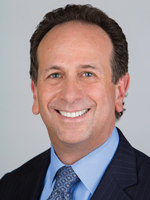ProShares is the largest provider of U.S.-listed leveraged and inverse exchange-traded funds, and this focus has made the Bethesda, Md., company the ninth-largest U.S.-based ETF provider in terms of assets with $31.3 billion under management across its roster of 141 funds. In recent years, it has sought to broaden its appeal by launching more buy-and-hold products such as its Pet Care ETF (PAWZ) and Online Retail ETF (ONLN). ETFA recently spoke with ProShares CEO Michael Sapir about the pet business and other matters.
ETFA: I notice this trend, including from ProShares, of using the term “geared” funds for leveraged and inverse ETFs. What does “geared” mean?
Sapir: “Geared” is the term used in Europe to describe funds like these. We think it's a much more elegant way of referring to these types of funds.
ETFA: What percentage of ProShares funds are in the geared category?
 Sapir:
Sapir:
ETFA: Traditionally, who has been the main constituency for the ProShares ETFs?
Sapir: Well, they're not for mom-and-pop investors. It’s mostly knowledgeable investors who are looking to implement more sophisticated strategies.
ETFA: Is that more along the lines of institutional investors? How about financial advisors?
Sapir: Advisors do, and historically have, used geared products. There’s a fallacy out there that geared products are solely for very short-term trading. Many of our users actually use geared products as a hedge in a conservative manner. So if an advisor has concerns about what's going on in the market and it doesn't want to sell out their client’s position because of transaction costs or tax consequences, frequently they'll overlay an inverse product in order to reduce the risk in the portfolio. Geared products are tools, not strategies. As tools they can be used in a variety of different ways. Some are more aggressive and some are actually very conservative.
ETFA: Some of the products your firm launched in the past year-and-a-half or so, such as PAWZ and ONLN, are more retail investor-oriented funds. It might be an obvious question, but why did you roll out those types of products?
Sapir: We've been focused for number of years now on developing products that have a broader potential appeal. Our most successful products have been our Dividend Grower funds, which are products that arguably could fit into almost any investor portfolio. And now with some of the thematics that we've introduced, we're offering additional products that are not designed for tactical use. They’re buy-and-hold products that have an investment thesis that could make sense for a lot of investors.
You look at something like our pet care ETF that has the ticker PAWZ. Some people might say, ‘Well, that's kind of a cutesy ticker.’ But if you look at the underlying investment proposition of investing in pet care, it has a lot of credibility. People are spending a lot of money on their pets, and it's not just basic spending—it’s high-end spending. And you can see the success that many pet-care providers are experiencing. Owners of pets may be attracted to the fund because they're buying what they know, but I think that the broader investment thesis make sense.
ETFA: Do you have any role in coming up with ticker symbols? Were you behind PAWZ?
Sapir: I was not.
ETFA: Have you dabbled in ticker symbols?
Sapir: I don't think there's anyone in the ETF industry who hasn't at least had some thoughts about tickers. One of the fun parts of putting together an ETF is coming up with the ticker, and you’re looking for a ticker that obviously is memorable and relates to your product.
ETFA: ProShares is consistently around ninth or 10th among U.S. ETF providers. Are you satisfied with your place in the industry and the role ProShares serves?
Sapir: Absolutely. We're not looking to be a, let's call it, a big box-store provider of ETFs. We’re looking to provide value-added products that can help people build better portfolios. Obviously, there's a place for the plain-beta products. But there's also a place for products that can deliver something different and something value-added, and we plan to continue to introduce products that fit those criteria.